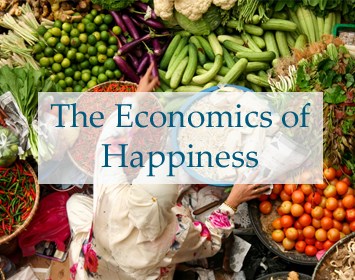Inauguration 2017 Special Coverage w/ Angela Davis, Naomi Klein, Ralph Nader & More
Menu

Special coverage in the Trump Era
From Public Citizen's Corporate Presidency site: "44 Trump administration officials have close ties to the Koch brothers and their network of political groups, particularly Vice President Mike Pence, White House Legislative Affairs Director Marc Short, EPA Administrator Scott Pruitt and White House budget director Mick Mulvaney."
Dark Money author Jane Mayer on The Dangers of President Pence, New Yorker, Oct. 23 issue on-line
Can Time Inc. Survive the Kochs? November 28, 2017 By Jane Mayer
..."This year, among the Kochs’ aims is to spend a projected four hundred million dollars in contributions from themselves and a small group of allied conservative donors they have assembled, to insure Republican victories in the 2018 midterm elections. Ordinarily, political reporters for Time magazine would chronicle this blatant attempt by the Kochs and their allies to buy political influence in the coming election cycle. Will they feel as free to do so now?"...
"Democracy in Chains: The Deep History of the Radical Right’s Stealth Plan for America" see: our site, and George Monbiot's essay on this key book by historian Nancy MacLean.
Full interview with The New Yorker’s Jane Mayer March 29, 2017, Democracy Now! about her article, "The Reclusive Hedge-Fund Tycoon Behind the Trump Presidency: How Robert Mercer Exploited America’s Populist Insurgency."
Democracy Now! Special Broadcast from the Women's March on Washington
The Economics of Happiness -- shorter version
Local Futures offers a free 19-minute abridged version of its award-winning documentary film The Economics of Happiness. It "brings us voices of hope of in a time of crisis." www.localfutures.org.
What's New?
March 25, 2010
Better School Food Equals More Local Farms
"Last week, U.S. Senator Blanche Lincoln (D-Ark.), Chairman of the U.S. Senate Committee on Agriculture, Nutrition and Forestry, unveiled the Healthy, Hunger-Free Kids Act of 2010, which provides $4.5 billion in new child nutrition program funding over ten years. It says on Lincoln's website: "This legislation will also mark the first time since the inception of the National School Lunch Program that Congress has dedicated this level of resources to increasing the program's reimbursement rate."
Currently, the National School Lunch Program feeds nearly 31 million students every day for $9.3 billion per year. At the end of February, President Barack Obama proposed a $1 billion a year increase ($10 billion over ten years) in funding for U.S. child nutrition programs including school lunches. Sounds like a lot. But $1 billion, it turns out, really only boils down to an extra twenty cents per school meal. Right now, the reimbursement rate per meal is $2.68, and less than a dollar of that goes towards actual food. The rest is spent on infrastructure. Many school food advocates believe that serving wholesome, nutritious meals for under $3 is just not possible and there has been a rallying cry for more - up to a $1 more per child's meal.
Fred Kirschenmann, Distinguished Fellow of the Leopold Center for Sustainable Agriculture and President of Stone Barns Center for Food and Agriculture, once told me if the USDA did nothing else than change the food served in schools, then he would be happy because "to change the school lunch program, USDA Secretary Vilsack will have to change the infrastructure that delivers the food to our schools and that will change the food system because it will provide many new opportunities for farmers to get food they produce to consumers, and I think that will encourage more of our young want-to-bes to begin farming."
That statement seems fairly profound - that by changing our school food we could actually change this nation's agricultural system by empowering local farms with local school dollars. So how exactly would an increase, if it actually happened, in the National School Lunch Program change or impact local farm production? Would biodiversity increase? Would commodity crops disappear to make room for more fruit and vegetables? How would the relationship between the schools and the farmers change?
Here are a few answers to those questions from leaders in the school food movement:"
Read complete article here

